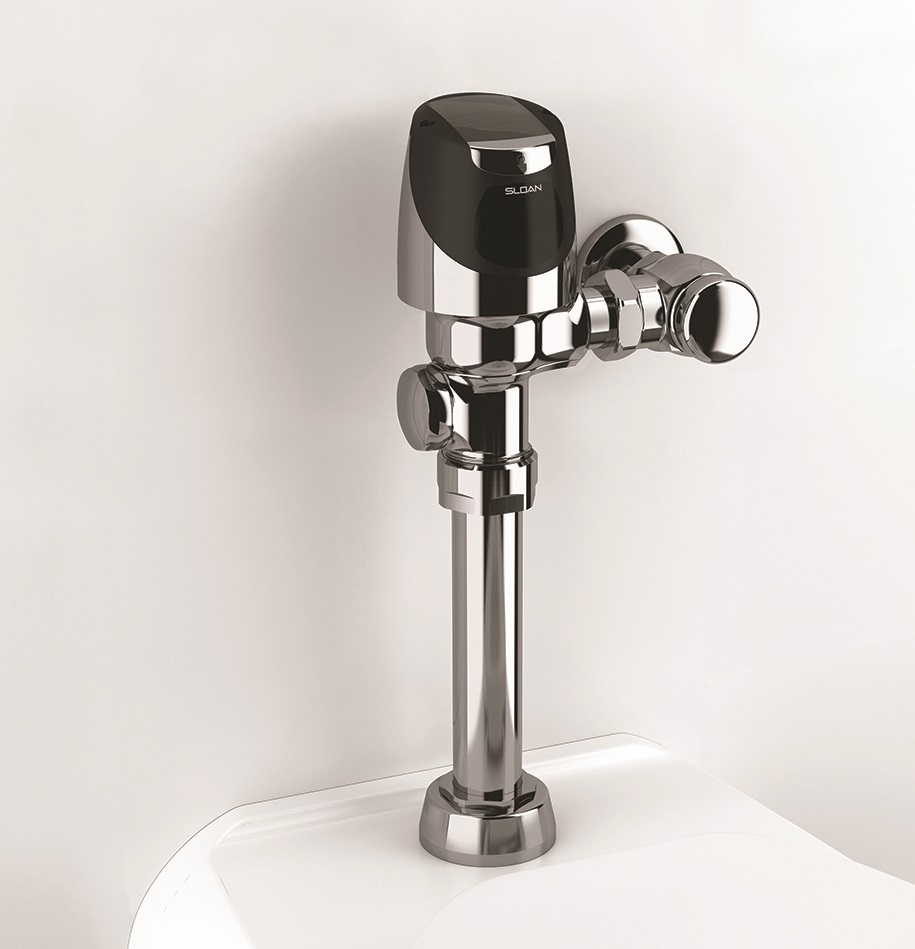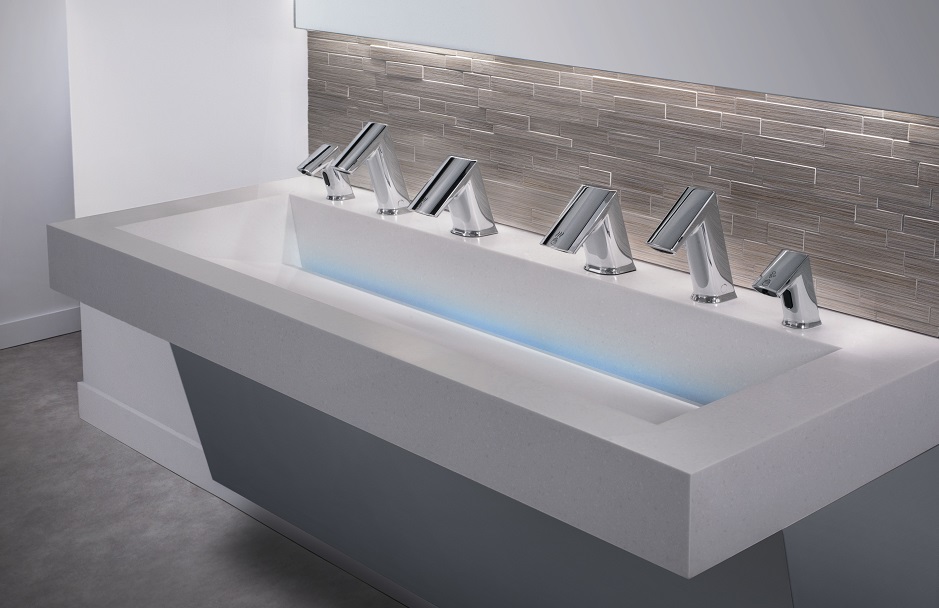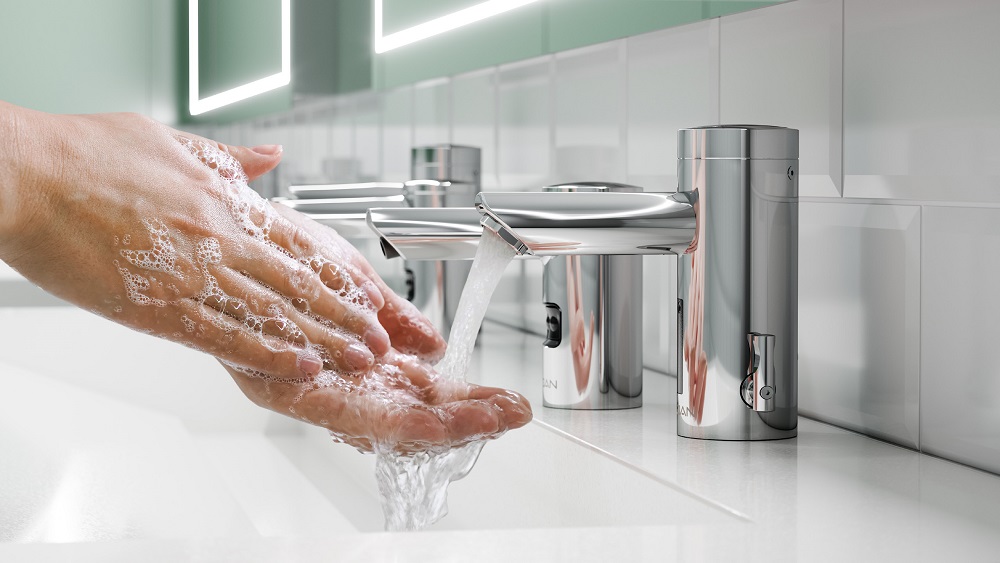With the passage of the $1.9 trillion American Rescue Plan Act of 2021 in March, $272.7 billion has been made available to upgrade American educational facilities. Many schools, colleges, and universities have taken advantage of these funds to improve the disease-mitigating and other hygienic properties of their facilities in the wake of the COVID-19 pandemic.
One of the strongest choices schools can make in this regard is replacing manual restroom fixtures with touch-free fixtures—and that is exactly what thousands of facilities are already doing.
Claiming these funds is far from a simple process, however. At Sloan, we’ve helped numerous districts claim several million dollars for restroom renovations, so we’ve complied this list of questions we’ve heard in the hopes that the answers will help you make the improvements your schools need—and your students and faculty deserve.
How do restroom renovations help prevent the spread of COVID-19?
Replacing manual fixtures with touch-free, sensor-operated faucets, soap dispensers, hand dryers, and flushometers lowers the risk of spreading disease for the simple reason that people touch fewer surfaces while using the restroom.
The COVID-19 virus can live up to three days on stainless steel. In Japan, 39 train drivers were infected via manual faucets at a boarding area of the Toei Subway Oedo Line.
Hand hygiene, of course, is important to schools regardless of COVID-19. In the United States, 22 million school days are lost annually due to the common cold, and 38 million days lost to the flu. When students and teachers touch fewer restroom surfaces, viruses simply have less opportunity to spread.
Why spend money on restrooms and not improved HVAC?
Improvements in a building’s heating and ventilations systems—such as installing ultraviolet germicidal irradiation (UVGI) technology—can be a very effective means of mitigating the spread of airborne diseases such as COVID-19.
Projects of that scope, however, tend to be larger and more complex than plumbing upgrades. They take longer and cost more. Assuming there are no structural changes, you can upgrade your restrooms while school facilities are closed over the summer. Many sensor faucets, soap dispensers, hand dryers, and flushometers can be retrofitted from manual versions install in as little as a few minutes. But changing out a building’s ventilation systems can require extended, full-building closures.
How do we start the process of requesting funds for restroom renovations?
There are three federal programs administering Coronavirus Relief Stimulus Funding:
- ESSERF: Elementary and Secondary School Relief Fund—funding for K-12 facilities receiving Title 1 funding.
- GEERF: Governors Emergency Education Relief Fund—funding for Local Education Agencies (LEAs) that are most in need, with grants at the discretion of the state governor.
- HEERF: Higher Education Emergency Relief Fund—funding for Higher Education Facilities receiving Pell Grants.
Under ESSERF and GEERF, your Local Educational Agency (LEA) leads the “re-opening plan.” They administer the funds. Your first step is to develop a list of needs with estimated budgets.
Under HEERF, funding is awarded by the U.S. Department of Education. Your first step is establishing the scope and value of your desired improvements.
In all cases, you can request a site audit to document your priorities. Sloan has dedicated resources for this purpose, and your local Sloan rep can help with this crucial step.
For more complete information, visit Sloan’s comprehensive guide to Coronavirus Relief Stimulus Funding. You’ll find numerous resources to explore—program details, webinars, downloadable guides, and helpful links.
What kind of information does the site audit require?
The site audit is fairly simple—it records the number of restrooms in your facility, the total numbers of sinks, faucets, flushometers, soap dispensers, and hand dryers, and the brand and styles of these fixtures.
Its purpose is to document the number of fixtures you will need to upgrade from manual to touch-free and to estimate the funds those upgrades will require.
How can my Sloan rep help with this process?
In addition to helping you complete your site audit, your Sloan rep can help you select the products that best suit your facility from the industry’s broadest selection of touch-free faucets, soap dispensers, hand dryers, and flushometers.
Your rep can also help you put together a budget proposal and craft your “justification statement”—two essential steps in the funding request process.
What sort of Sloan products can be covered?
Retrofit kits for toilet and urinal flushometers are among the most popular Sloan products educational facilities purchase with Coronavirus Relief Stimulus Funding. They are affordable and can be installed very quickly. And, because Sloan invented the flushometer, our products are the basis of design for most manufacturers, so these kits (both top and side mount) will usually fit other brands.

You can also replace existing fixtures with Sloan toilets and urinals optimally designed to work with our touch-free flushometers.
Touch-free faucets are another popular upgrade, along with matching sensor-operated soap dispensers. Many schools replace their sinks with sturdy, stylish Sloan sinks or with the AER-DEC® Integrated Sink System, which combines a touch-free faucet, soap dispenser, and hand dryer into a single, drip-free handwashing experience.

The new Sloan Mobile Handwashing Station can be placed anywhere in your building to let students and faculty wash their hands without visiting a restroom. Many schools place them in cafeterias or hallways, or near sports facilities such as football stadiums, pools, and gymnasiums.
Can Coronavirus Relief Stimulus Funding be used for structural changes, such as building gender inclusive restrooms?
Yes. Public restroom design is evolving, and the need for touch-free technology is not the only driver. The need for increased privacy and the adoption of restroom traffic management systems are other novel approaches that can drive renovations.
Many schools are building restrooms based on a European model of stalls forming a perimeter around communal washing stations with open circulation, and we are aware of several that have done so with Coronavirus Relief Stimulus Funding.
Can we be reimbursed for money already spent on restroom renovations?
Yes. Your Sloan rep can help you complete your site audit and craft your “justification statement” to claim funding for projects you’ve already completed.
Is there funding available for private and parochial schools?
Yes, there are programs available for private schools. The Governors Emergency Education Relief Fund (GEERF) gives each state’s Governor the ability to distribute funding according to their own priorities in a competitive grant process. Each state has different priorities and processes for GEERF funding. Your Sloan rep can help you learn about the priorities and processes in your state.
How can I contact a Sloan rep?
Visit this page to connect with a Sloan rep in your area, or call Sloan at 800.982.5839.
Coronavirus Relief Stimulus Funding is a unique opportunity to deploy public funds to make lasting improvements to your facility’s restrooms while safeguarding the health of your students and faculty. Sloan stands ready to help you through every step of the process.
Want to take advantage of these government grants to make your restrooms more hygienic? Need recommendations regarding the best options for your facilities? Contact Sloan!
Stay Up to Date
Sign up for the Sloan blog to receive information on the latest trends in commercial building, technology advancements and product updates. It's the leading source of industry news for architects, designers, engineers and contractors.
